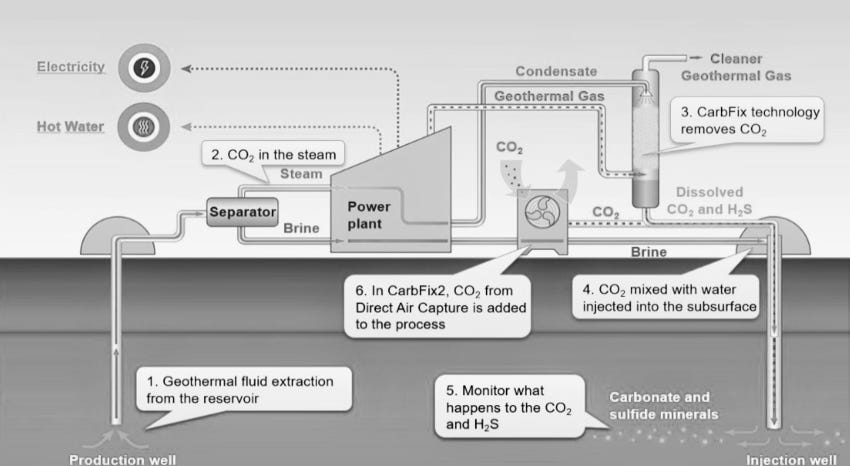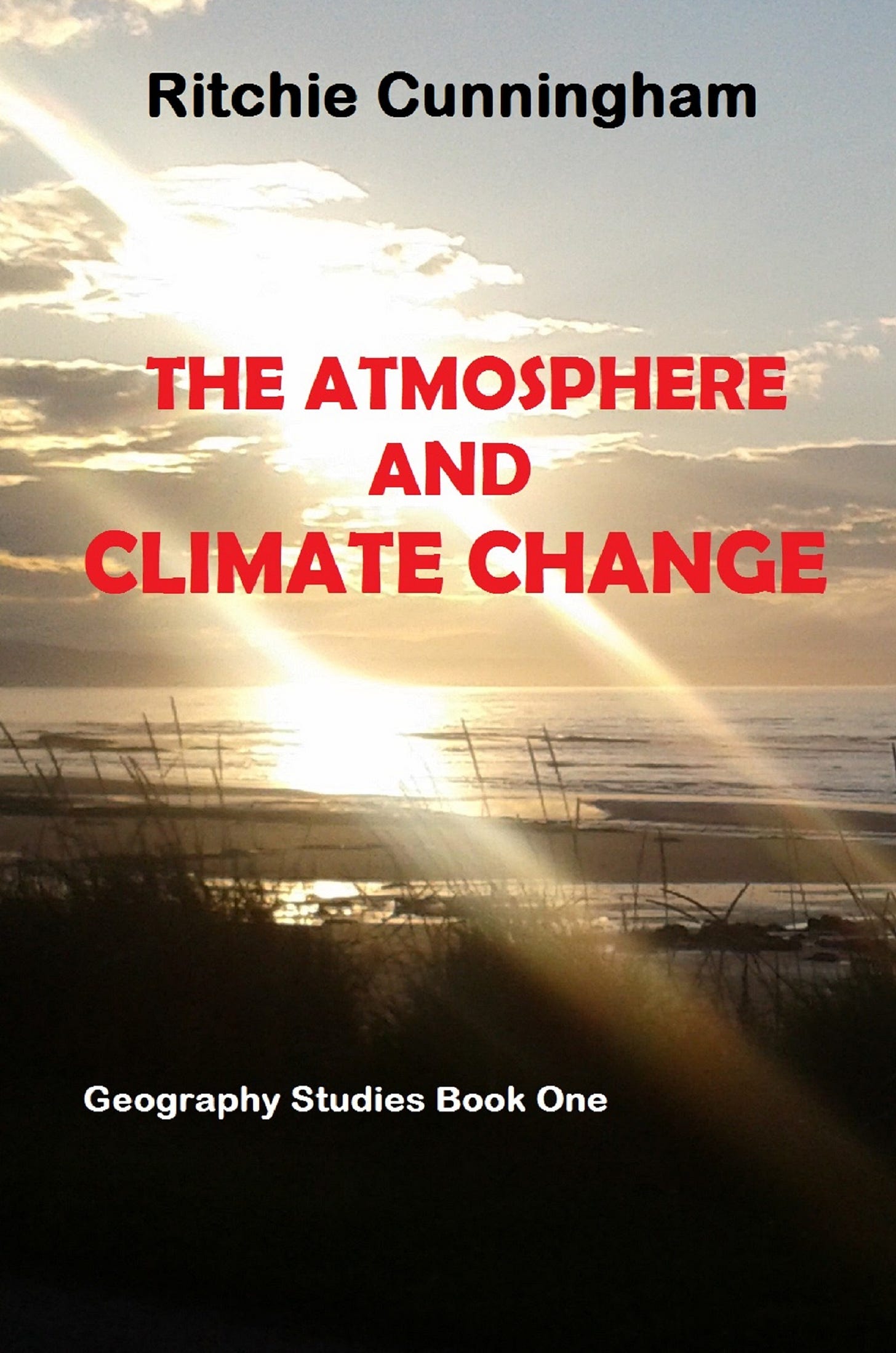Prioritising Adaptation to Climate Change is Crucial
Adaption or mitigation, two sides of the coin
The Earth's climate is a complex system intricately linked to the carbon and water cycles. These cycles play a vital role in regulating temperature, precipitation patterns, and ultimately, supporting life on Earth. Human activities, particularly the burning of fossil fuels, have disrupted these cycles, leading to a rise in atmospheric CO2 and significant changes in global climate. While mitigating these changes by reducing CO2 emissions remains crucial, the reality is that some degree of climate change is inevitable. This necessitates a strong focus on adaptation strategies alongside mitigation efforts. In the ongoing discourse surrounding climate change mitigation, there exists a critical debate on where our efforts should be directed: towards restoring atmospheric carbon to pre-industrial levels or towards adapting to the inevitable negative impacts of climate change. While both strategies are vital, the emphasis on adaptation warrants a closer examination due to its pragmatic approach to addressing the current and future challenges posed by a changing climate.
Feedback Loops and the Urgency of Adaptation
The carbon and water cycles are tightly interwoven with feedback loops that can amplify or dampen climate change. For example, deforestation disrupts the water cycle, reducing rainfall and increasing the risk of wildfires. Wildfires, in turn, release stored carbon back into the atmosphere, further accelerating warming. These positive feedback loops highlight the urgency of adaptation. Even if ambitious emissions reduction targets are met, the existing level of CO2 in the atmosphere will continue to influence climate for decades to come.
The Earth's carbon and water cycles are fundamental components supporting life, regulating climate, and sustaining ecosystems. The intricate relationship between these cycles plays a pivotal role in shaping climate patterns and influencing environmental conditions. Carbon, in various forms, serves as the building block of life, while water acts as a universal solvent and facilitator of numerous biochemical processes. The interplay between the water and carbon cycles in the atmosphere regulates temperature, precipitation, and the distribution of energy across the planet.
Feedback mechanisms within and between these cycles contribute to climate change dynamics. For instance, increased atmospheric carbon dioxide levels intensify the greenhouse effect, leading to rising temperatures and altering precipitation patterns. This, in turn, affects the water cycle by influencing evaporation rates, cloud formation, and precipitation distribution. Human interventions, such as deforestation, fossil fuel combustion, and land-use changes, disrupt these cycles, exacerbating climate change.
Historically, natural variations and human activities have significantly altered the carbon cycle. While natural phenomena like wildfires and volcanic eruptions contribute to carbon emissions, human activities such as industrialisation, deforestation, and fossil fuel extraction have accelerated carbon release into the atmosphere. These disturbances have disrupted the delicate balance of carbon fluxes, leading to unprecedented levels of atmospheric carbon dioxide.
Challenges of Mitigation vs. Opportunities in Adaptation
Achieving pre-industrial CO2 levels through mitigation efforts like large-scale carbon capture and storage (CCS) presents significant challenges. CCS technology is still in its early stages, and its long-term viability and environmental impact remain uncertain [1]. Additionally, transitioning entirely to renewable energy sources requires major infrastructure changes and overcoming economic and political hurdles.
Adaptation strategies, on the other hand, offer opportunities to lessen the impact of climate change on our societies and ecosystems. Examples include:
Developing drought-resistant crops: This helps ensure food security in areas experiencing decreased precipitation.
Improving flood defences: Rising sea levels and more extreme weather events require better coastal management and flood protection infrastructure.
Shifting agricultural practices: Utilising water-efficient irrigation methods and adopting crops better suited to changing temperatures can reduce vulnerability in the agricultural sector.
Mitigation efforts traditionally focus on reducing carbon emissions and restoring atmospheric carbon to pre-industrial levels. Global agreements like the Paris Accord underscore the importance of collective action in curbing greenhouse gas emissions and limiting global warming. Investments in carbon capture and storage technologies, renewable energy, and sustainable practices aim to mitigate the impacts of climate change by reducing carbon emissions.
However, achieving carbon neutrality and restoring atmospheric carbon to pre-industrial levels present formidable challenges. Despite technological advancements, the scale and urgency of carbon reduction efforts require substantial global cooperation and investment. Additionally, the efficacy of carbon capture and storage technologies remains debated, with concerns over feasibility, cost-effectiveness, and long-term environmental impacts.
Alternatively, adaptation strategies acknowledge the inevitability of climate change and focus on minimising its adverse effects. By adapting agricultural practices, land-use planning, and infrastructure development, societies can mitigate risks associated with changing climate patterns. For instance, adopting drought-resistant crops, implementing water conservation measures, and enhancing coastal defences can help communities adapt to shifting climate conditions.
The Paris Agreement and the Two Sides of the Coin
The Paris Agreement, a landmark international agreement on climate change, acknowledges the need for both mitigation and adaptation. It encourages nations to set ambitious emissions reduction targets while also outlining the importance of building resilience to the impacts of climate change [2]. Initiatives like the Shandong Ecological Afforestation Scheme demonstrate how adaptation can be combined with mitigation efforts. By restoring degraded land and creating new forests, this scheme not only combats desertification but also increases carbon sequestration [3]. These nature-based solutions not only mitigate climate change but also offer additional ecological and socioeconomic benefits.
Conclusion: A Multi-Pronged Approach is Key
Climate change is a pressing global issue, and while reducing greenhouse gas emissions is crucial, adapting to its inevitable impacts is equally important. Here are some key reasons why human activity needs to focus more on adaptation: The Earth's climate system has significant inertia, meaning the effects of past and current emissions will persist for decades or centuries. Even if we achieve net-zero emissions tomorrow, global temperatures will continue rising for some time due to the long atmospheric lifetime of greenhouse gases. [4] This makes adaptation to unavoidable climate impacts essential. Many climate change impacts are already locked in and unavoidable, even under the most ambitious mitigation scenarios. Sea levels will continue rising for centuries, extreme weather events will intensify, and some ecosystems will undergo irreversible changes. [4] Adaptation measures like flood defences, drought-resistant crops, and resilient infrastructure are needed to cope with these impacts. The potential for effective mitigation decreases as global warming progresses. Some adaptation options become less effective or lose their feasibility beyond certain temperature thresholds. [4] Early adaptation can increase our coping capacity and prevent locking into higher-risk pathways. Certain regions and communities are disproportionately vulnerable to climate impacts due to their geography, socioeconomic status, or limited resources.
Prioritising adaptation can help protect these vulnerable populations and promote climate justice. While mitigation is a global challenge, adaptation is inherently local and context-specific. Local governments and communities are best positioned to identify and implement tailored adaptation strategies for their unique circumstances and needs.[5] In summary, while rapid and deep cuts in greenhouse gas emissions remain imperative, the reality of climate change necessitates a parallel focus on adaptation to reduce risks, build resilience, and protect vulnerable populations and ecosystems. [4] A balanced approach combining mitigation and adaptation efforts is crucial for an effective global response to climate change. While efforts to reduce carbon emissions and restore atmospheric carbon are crucial, prioritising adaptation strategies can provide more immediate and tangible benefits in mitigating the impacts of climate change. By embracing adaptive measures, societies can build resilience, safeguard ecosystems, and ensure sustainable development in a rapidly changing climate landscape. It is imperative to strike a balance between mitigation and adaptation efforts to address the multifaceted challenges posed by climate change effectively.
References
[1] International Energy Agency. (2020). Global Status of CCS 2020. [invalid URL removed] [
2] United Nations Framework Convention on Climate Change. (2015). Paris Agreement. https://unfccc.int/process-and-meetings/the-paris-agreement/the-paris-agreement
[3] Bai, Z., Deng, L., Wang, Y., Zhu, Q., Zhao, M., & Xu, G. (2014). Responses of ecosystem services to climate change in the typical ecological regions of China. Journal of Arid Land, 6(2), 260-272.
www.ipcc.ch/report/ar6/wg2/about/frequently-asked-questions/keyfaq4/
[5] Mitigation and Adaptation (nasa.gov)
//science.nasa.gov/climate-change/adaptation-mitigation/
A typical examination for this area of the curriculum is -
Nations need to focus more on adapting to the expected negative impacts of climate change than on taking measures to restore atmospheric carbon to pre-industrial levels.’ How far do you agree with this view?








